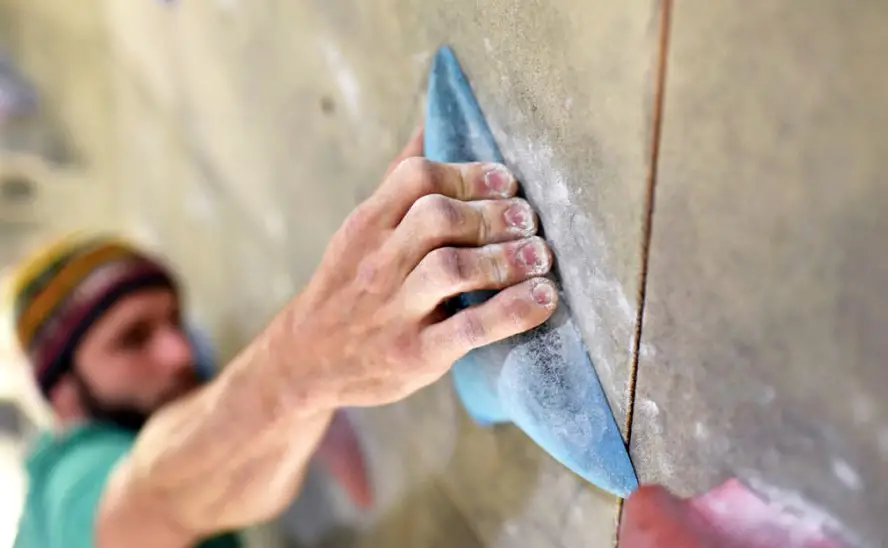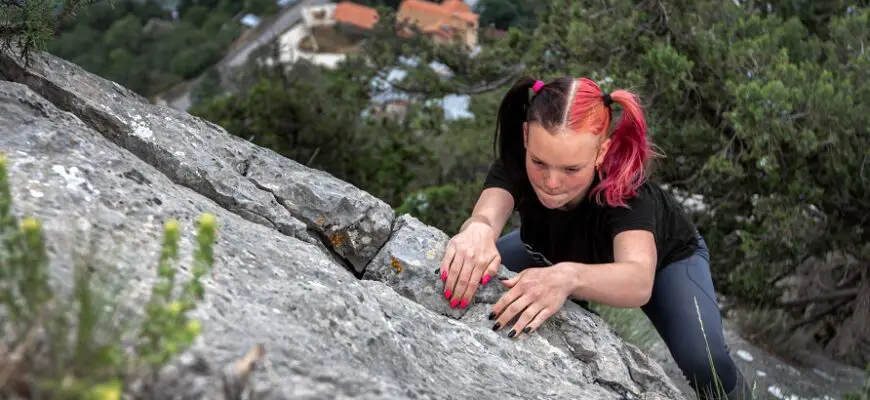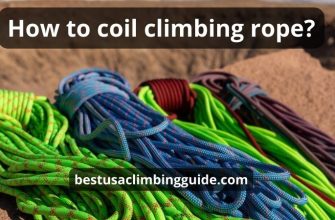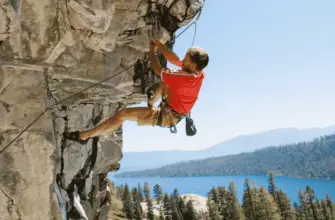Can you Rock Climb with Long Nails? We have an answer! Everyone interested in trying rock climbing will get a fantastic workout from it. The sport may be quite harsh on your fingers, especially your fingernails if you wear long nails.
We’ll discuss how to rock climb with long nails and reduce the risk of fake nail issues.
Also, we’ll offer you advice on how to strengthen and look after your long or fake nails during your upcoming rock climb with long nails.

- Can you rock climb with long nails or do I need to cut my nails?
- How short do nails have to be to rock climb?
- Can you go climbing with fake nails?
- How to take part in rock climbing with long or fake nails
- Use press-on nails instead of acrylic nails
- Length of nails
- Choose the proper chalk
- Utilize hydrogen peroxide
- Keep your hands clean
- Before climbing, but also afterward, moisturize your hands
- Use gel fingernail polish
- Be ready to tolerate the noise of your long nails
- Breaks or pain in the fingernails
- Measures and actions you should take to avoid breaking your nails
- Final words
Can you rock climb with long nails or do I need to cut my nails?
Your hands are used a lot while rock-climbing or lead-climbing. Rock climbing will inevitably harm your nails in some way, albeit how much damage depends on whether you climb outside or indoors and what kind of rock you are climbing on.
Rock climbing can therefore be particularly damaging to your fingernails.
Short, scratched-up fingernails are typical of rock climbers. Your nails will get filed down just by climbing because both the grips on indoor climbing walls and the granite outside are abrasive.
Your nails might shatter more if you climb on something as hard as granite, but if you climb on something as soft and abrasive as sandstone, you might wind up filing your nails short just by climbing.
How short do nails have to be to rock climb?
Rock climbing with long nails is not optimal. If you want to climb a lot, you should aim to keep your nails short to prevent them from breaking on the rock or hindering your ability to grip onto small holds.
You might get chalk stuck under your nails, which is a problem with long nails that is unrelated to breakage.
The skin under your nails may dry out more quickly as a result of how stressful and challenging it can be to get out of this situation.
Before rock climbing, clipping fingernails demands a significant trim, not just a light one.
Make sure that only a small amount of white is visible when clipping nails. Nails that weren’t sufficiently cut will scratch the wall. They were over-trimmed if they ached after trimming.
Be cautious when trimming the cuticle, as infection may develop. It is advised that if cuticles are an issue, one should see a licensed cosmetologist to have them trimmed off.
To avoid hangnails, which may be incredibly uncomfortable when trying to rock climb with long nails, be sure to cut round edges all the way to the side of the nail.
Everyone benefits from having their fingernails cut, so they won’t have to listen to them scrape across the rocks like chalk on a board.

Can you go climbing with fake nails?
Rock climbing is challenging with fake nails. A climber’s strength, endurance, balance, and mental control are typically put to the test in the physically and mentally taxing activity of rock climbing.
Regardless of whether you’re a female climbing or bouldering specialist, you might want to treat yourself to a nice manicure or fake nails at some point, just like many people do.
When sports tape became a thing, climbers have been “mummy-wrapping” their fingertips. But is it actually possible (or advised) to climb rocks while wearing long or fake nails? Let’s discuss it.
How to take part in rock climbing with long or fake nails
A climber’s grip must not only be strong, it must also be resilient enough to withstand numerous cracks and blisters while enduring hold after hold.
Shorter nails are unquestionably advised when climbing.
Also, if your fake nails are long, your grip could be affected, increasing the risk of falling. So, what are the possible solutions to this problem?
Use press-on nails instead of acrylic nails
Press-on nails instead of acrylic nails are your best choice if you plan to go rock climbing while wearing fake nails. Press-on nails may be readily removed with water and won’t harm your natural nails. Press-on nails are less expensive than acrylic nails and may be applied rapidly.
You can also end up with a bleeding nail bed if your acrylic nails break off during a climbing session. This obviously isn’t the best approach for climbing a rock.
The climber will feel more comfortable because press-on nails are softer and more flexible than acrylic extensions.
These fake nails are a good choice for rock climbing because they can be readily removed and worn without concern.
They won’t cause a climber much financial worry if they break while climbing.
Finding the right size for your fake fingernails for your cuticles is a simple method for these nails. Anything that is too big or too little could make climbing more difficult.

Length of nails
You must first determine whether you genuinely think that you can climb and wear fake nails. If so, you must take care to maintain their condition.
The next best solution could be to trim your long or fake/acrylic fingernails because you are less likely to hurt yourself if you hit your hand.
Also, keep the edges clipped because long fake nails are prone to splitting. If you are particularly particular about your nails, you will need to travel with a manicure file.
Remember that dynamic moves do not work well with long or fake nails, despite your desire for long fake nails. You must overcome many obstacles to attain your target when rock climbing.
The worst-case scenario is that you could fall and rip off your entire nail. If you do decide to climb with fake fingernails, short fingernail length is advised!
Choose the proper chalk
To improve friction and grips during top-roping, lead climbing, etc., many rock climbers use chalk to dry out perspiration and other moisture from their hands. Use a brand of chalk that is pure and free of contaminants.
The right chalk prevents over-drying or cracking and maintains your natural or synthetic nails and skin healthy. Magnesium carbonate, which is typically available in white but can occasionally be found in other colors as well, is the main ingredient in good climbing chalk.
There are typically numerous types of climbing chalk to pick from, including block, loose, and liquid. It depends on your preferences regarding which one you use. Your grip may occasionally be better than you anticipated while rock climbing using fake nails if you’re using the proper chalk.

Utilize hydrogen peroxide
While climbing, keep a spray bottle of alcohol or hydrogen peroxide nearby. That will make a fantastic addition to your climbing gear. Both will quickly dry if you apply them to your hands and massage them together.
Use chalk afterward to increase effectiveness.
Those with oily skin can utilize this repeatedly all day long. Moreover, using false nails while climbing will improve your grip.
Keep your hands clean
If you decide to try rock climbing with fake fingernails, the first thing you need to do is wash your hands. Start your climbing day by giving your hands a good wash, and avoid using any oil while climbing.
Since each person has a different type of skin, dry hands should concentrate on adding moisture when they are washed (of course, before climbing), whereas oily hands should concentrate on removing that oil using soaps designed for this purpose.
Wash your hands in hot water to remove oil and completely cleanse them, then rinse with cold water.
Before climbing, but also afterward, moisturize your hands
Two to three hours before climbing, moisturize your hands. Your skin will be hydrated and supple as you start your ascent if you apply a moisturizer at the proper time.
Even if you are prepared to rock climbing with fake nails, your hands still need to be adequately moisturized for a better grip. As was already indicated, this will increase grip while lowering oils.
If you frequently climb, apply a salve before going to bed. This will help heal injuries and keep your skin hydrated. On the market, there are plenty of formulations made specifically for climbing. Choose one that you like and include it in your climbing equipment.
Use gel fingernail polish
The female rock climber community has affirmed that their gel nail polish has often endured their expeditions.
Gel polish fortifies your own nails, so they become tougher rather than chipping. One fantastic feature of gel polish is that it makes nails hard and nourished while lasting for more than a week.
But, do not anticipate your nails to appear beautiful after going rock climbing with fake nails, since the scraping required to secure a decent handhold may damage both your nails and the gel nail polish.

Be ready to tolerate the noise of your long nails
You must also be ready to tolerate the sound of the long fake nails scratching against the rock if you have opted to go rock climbing with them. After some time climbing, you could grow quite annoyed by the noise and regret wearing false nails.
Keep in mind to show consideration for people who are climbing around you. Be careful you’re not upsetting others because some people are sensitive to the sound of nails scraping during climbing rocks!
Breaks or pain in the fingernails
Keratin, a protein derived from dead cells, is the same protein that makes up hair and is also present in fingernails. Fingernails are structurally modified hair.
As the nail is made of dead cells and lacks nerve endings, it does not hurt when it breaks while rock climbing.
The matrix, which is where the nail grows, is where breaking a nail while rock climbing hurts. When a fingernail is torn off because it is too long or has false nails attached, the matrix is severely damaged, which may affect how the nail grows in the future.
A fungal infection that is easily cured with antifungal ointment develops in fingernails that have been taped or coated for an extended period of time by rock climbers.
Yellow nails can indicate a serious ailment such as thyroid disease, diabetes, or lung disease, so if the yellowing persists, talk to your doctor.
Measures and actions you should take to avoid breaking your nails
- Use a biotin supplement (also known as Vitamin H and Vitamin B-7). Supplemental biotin can help strengthen hair and fingernails. Eating meals like boiled eggs and beans can help you consume the biotin.
- A great way to strengthen fingernails is to eat well. Eating a balanced diet rich in vitamins, minerals, and other nutrients to maintain healthy skin, hair, and nails.
- Acetone-containing nail polish removers should be avoided since they harm nails. Use non-toxic nail polish, soaks, and nail polish remover instead.
- Although it is common to wear long or false fingernails, it is neither safe nor comfortable to do so. Without nails that will break off and hurt the climber, there are already too many variables in rock climbing. Clear gel polish or even colorful gel polishes applied to neatly clipped nails might be beneficial.
- You won’t have to abandon your nail polish altogether, as gel nail polish strengthens the nail, reducing breaking.
- Keep your fingernails short. It’s a good idea to keep your nails cut so that they are roughly the same length as your fingers. No longer than your finger is a fantastic place to start, but as you climb, you’ll develop more of your opinion about how long you wish your nails to be.
- Smoothen the arc of your nails; avoid sharp corners.Although some people like more squared-off nails, safe rock climbing is not possible with that look. Maintaining neat, rounded nails free of sharp edges is the best strategy to combat this issue.
- To remove chalk from your nails after climbing, thoroughly wash them.Once you finish climbing, washing your hands and paying close care to your nails will help remove all the extra chalk from your skin and under your nails. The nails can become substantially weaker and more prone to breaking if you keep chalk under them.

Final words
Although rock climbing is a fantastic form of exercise and may be a great social activity, it can be tough on your hands and long fingernails.
The easiest approach to keeping healthy long fingernails while rock climbing is to be sure to take proper care of your hands and fingers.
While these tips will keep your nails out of the way and lessen the severe dryness and cracking from chalk use, we advise keeping them short and neat when rock climbing.
Also Read: Rock Climbing From Ancient Practice To Olympic Sport











